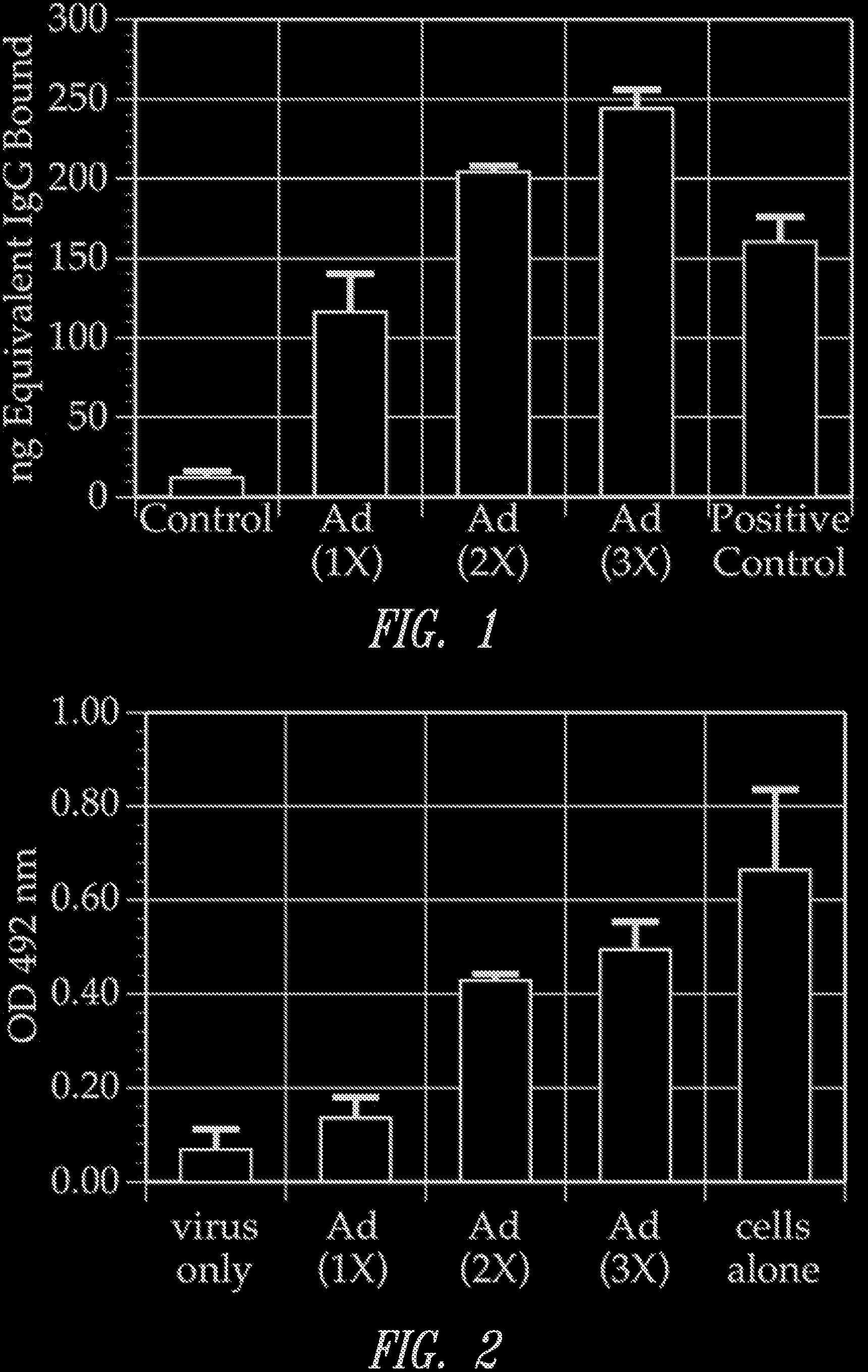Invented by Joseph P. Balint, Frank R. Jones, Richard B. Gayle, III, Etubics Corp
Adenoviruses are a family of viruses that can cause respiratory, gastrointestinal, and ocular infections in humans. However, they have also been extensively studied and modified for use as vaccine vectors. Adenovirus vectors are created by removing essential viral genes and replacing them with genes encoding antigens from the target pathogen. This allows the vector to deliver the antigen to host cells, triggering an immune response without causing disease.
One of the key advantages of adenovirus vectors is their ability to induce both humoral and cellular immune responses. Humoral immunity involves the production of antibodies, while cellular immunity involves the activation of T cells. This dual immune response is crucial for providing long-lasting protection against a wide range of pathogens.
The market for methods and compositions for creating adenovirus vectors is driven by the increasing demand for effective vaccines against various infectious diseases. Adenovirus vectors have shown promising results in preclinical and clinical trials for diseases such as HIV, malaria, tuberculosis, and influenza. These vectors can be engineered to express multiple antigens, making them ideal for developing vaccines against complex pathogens or for creating multivalent vaccines that target multiple diseases simultaneously.
Furthermore, adenovirus vectors have advantages over other vaccine delivery systems, such as viral vectors based on lentivirus or vesicular stomatitis virus (VSV). Adenovirus vectors can be produced at high titers, allowing for large-scale manufacturing. They are also stable and can be stored at refrigerated temperatures, simplifying distribution and storage logistics.
The market for methods for creating adenovirus vectors is also driven by the need for improved vector design and manufacturing processes. Researchers are constantly exploring new methods to enhance vector stability, increase transduction efficiency, and reduce immunogenicity. These advancements aim to optimize the safety and efficacy of adenovirus vectors, making them more suitable for widespread use in vaccination campaigns.
In addition to methods and compositions, the market for methods for creating adenovirus vectors also includes intellectual property rights and licensing agreements. Companies and research institutions that have developed novel vector designs or manufacturing processes can license their technology to vaccine developers, providing them with a competitive advantage in the market.
Overall, the market for methods, compositions, and methods for creating an adenovirus virus vector for multiple vaccinations is poised for significant growth. The increasing demand for effective vaccines, coupled with advancements in vector design and manufacturing processes, will continue to drive innovation in this field. As researchers and companies strive to develop safe and efficacious vaccines against a wide range of infectious diseases, adenovirus vectors are likely to play a crucial role in the future of vaccination.

The Etubics Corp invention works as follows
Methods to generate immune responses using the adenovirus Vectors are provided that allow multiple vaccinations with one adenovirus virus vector, and vaccinations of individuals with preexisting immunity.

Background for Methods, compositions and methods for creating an adenovirus virus vector for multiple vaccinations
Technical Field
Description of Related Art
BRIEF DESCRIPTION ABOUT THE VIEWS FROM THE DRAWINGS
Adenovirus Vectors
Heterologous Nucleic Acid
Methods for Use
EXAMPLES
Example 1, Multiple Injections Of Ad5null Adenovirus vector Produces Anti Adenovirus Antibodies”.
Example 2 Multiple injections of an Adenovirus vector E2b Generates Immune Responses against Target Antigens.
Example 3 Multiple injections of E2b Deleted Virus Vector Generates Immune Responses Against Multiple Targets Antigens”.

Example 4: Cell-mediated Immune (Cmi), Response Induction, in Adenovirus-5 Immune Cynomolgus macaques
Example 5: A modified Her2 cancer vaccine vector based on the Ad5 [E1b-, E2bb-] platform
Production and Characterization Ad5 HER2 vector
Induction Of Ad5 Immunity In Mice As Evidenced By Levels Of Ad5 NeutralizingAntibody
Immunization with Ad5 [E1b-, E2bb-]-HER2 of Ad5 immune mice
Induction CMI responses
Induction of Humoral Reactions
Lack Of Adverse Liver effects in Immunized Mice
Challenge for Ad5 [E1b-, E2bb-] Immunized Ad5 Immunized Mice with HER2 Expression Tumors”.
Example 6: The Ad5 [E1]-Cea vector vaccine induces Cea specific immune response upon re-immunization in Ad5 immunomice

Characterization and CEA vectors of Ad5

Click here to view the patent on Google Patents.
